The Motorola Atrix 4G Preview
by Anand Lal Shimpi on February 13, 2011 3:18 AM ESTHardware Impressions: Run of the Mill Motorola, aka Good Build Quality
The last Motorola phone I owned was the v70. Brian handled all of the 2nd generation Droid reviews, and while I've used them I never did so for an appreciable period of time. From the StarTAC to the v70, I will say I had some good experiences with Motorola hardware.
The Atrix 4G is no different. The phone is pretty light at 135 grams, that puts it in the class of the iPhone 4 and Optimus 2X (although the Atrix is lighter than both). Despite its weight, the Atrix 4G doesn't feel cheap - it just feels like a solid block of plastic. There's no discernible flex in the chassis, at least from my experience with the phone thus far. All gaps in the housing are both tiny and uniform. It's a well built product.
On the front is the 4.0" qHD PenTile LCD screen (960 x 540 resolution). At the top of the display is the front facing VGA camera, proximity sensors and notification LED. The LED is green when the Atrix 4G is plugged in and fully charged, it turns red when you are running low on battery and blinks green for all notification events.
Along the bottom of the screen are the four Android buttons, all capacitive. The ordering is identical to the Droid X and LG Optimus 2X with the contextual menu coming first, followed by home, back and search in that order.
Along the right edge of the phone is easily one of the best feeling volume rockers I've ever used. The rocker itself is plastic but with very little play, it feels solid and stationary. Each click, up and down, is perfectly distinct. It's a good quality feeling button.
This is a Tegra 2 phone and thus the left edge has both a microUSB port for charging and a micro HDMI type D port for video output. The two ports are similarly sized and placed close enough together that I always worry about jamming a USB cable into the micro HDMI port. Don't you hate when that happens? Like the LG Optimus 2X, Motorola bundles a ~6 foot micro HDMI to HDMI type A cable with the phone.
The power/lock button is in a unique location on the Atrix 4G. It's angled between the top and rear planes of the phone.
The button's location is unusual at first but I must say it's pretty easy to get used to and after a few days I didn't have any complaints about it. It's not as easy to fumble around with in your pocket than a conventional top mounted switch, but it works and it keeps the outer rim of the phone pretty clean.
The phone's 1/8" jack is located up top. There's a small slit for the primary microphone on the face of the phone. The speakerphone and noise canceling mic input are both located around the back.
The back cover is a thin piece of plastic with a carbon fiber-like pattern printed on it. It's a pretty classy design and the back cover, like the rest of the phone, doesn't feel cheap.
Motorola integrates a 5MP rear facing camera with LED flash on the back of the phone. The camera doesn't protrude beyond the back cover, instead it's recessed by a approximately 1mm.
A side effect of Motorola's tightly assembled design is that there's no notch to jam your fingernail in to easily remove the back cover. You have to instead do a bit of prying at the bottom before you can get enough room to really pull the thing off.
There are snaps located on both sides of the back cover, the top and the bottom just cup around the phone chassis to hold itself in place.
Inside the Atrix 4G is a very large ~7.0Whr battery. Motorola rates it between 1880mAh and 1930mAh. This is actually the first time I've seen a variable rating printed on a smartphone battery.
Like the Optimus 2X, the Atrix 4G's microSD slot is accessible without removing the battery. You do need to take out the battery to get to the SIM slot however. The Atrix 4G ships with 16GB of on-board NAND, so the microSD slot remains unpopulated by default. Of that 16GB only 14GB is available to Android (and of that ~11GB is for media storage). The remaining 2GB is presumably used for Motorola's webtop Linux environment. I managed to copy to the Atrix 4G's internal NAND at a peak of 10.5MB/s over USB.
| Physical Comparison | |||||||||
| Apple iPhone 4 | Motorola Droid 2 | Google Nexus S | LG Optimus 2X | Motorola Atrix 4G | |||||
| Height | 115.2 mm (4.5") | 116.3 mm (4.6") | 123.9 mm (4.88") | 123.9 mm (4.87") | 117.8mm | ||||
| Width | 58.6 mm (2.31") | 60.5 mm (2.4") | 63.0 mm (2.48") | 63.2 mm (2.48") | 63.5mm | ||||
| Depth | 9.3 mm ( 0.37") | 13.7 mm (0.54") | 10.88 mm (0.43") | 10.9 mm (0.43") | 10.95mm | ||||
| Weight | 137 g (4.8 oz) | 169 g (5.9 oz) | 129 grams (4.6 oz) | 139.0 grams (4.90 oz) | 135.0 grams | ||||
| CPU | Apple A4 @ ~800MHz | Texas Instruments OMAP 3630 @ 1 GHz | 1 GHz Samsung Hummingbird | NVIDIA Tegra 2 Dual-Core Cortex-A9 (AP20H) @ 1 GHz | NVIDIA Tegra 2 Dual-Core Cortex-A9 (AP20H) @ 1 GHz | ||||
| GPU | PowerVR SGX 535 | PowerVR SGX 530 | PowerVR SGX 540 | ULV GeForce @ 100-300 MHz | ULV GeForce @ 100-300 MHz | ||||
| RAM | 512MB LPDDR1 (?) | 512 MB LPDDR1 | 512 MB LPDDR1 | 512 MB LPDDR2 @ 600 MHz data rate | 1024 MB LPDDR2 @ 600 MHz data rate | ||||
| NAND | 16GB or 32GB integrated | 8 GB integrated, preinstalled 8 GB microSD | 16 GB Integrated | 8 GB integrated (5.51 GB internal SD, 1.12 phone storage), up to 32 microSD | 16 GB integrated, up to 32 microSD | ||||
| Camera | 5MP with LED Flash + Front Facing Camera | 5 MP with dual LED flash and autofocus | 5 MP with Autofocus, LED Flash, VGA front facing, 720P Video | 8 MP with autofocus, LED flash, 1080p24 video recording, 1.3 MP front facing | 5 MP with autofocus, LED flash, 720p video recording, VGA MP front facing | ||||
| Screen | 3.5" 640 x 960 LED backlit LCD | 3.7" 854 x 480 | 4" Super AMOLED 800 x 480 | 4" Super AMOLED 800 x 480 |
4" PenTile LCD 960 x 540 |
||||
I should mention that the name Atrix 4G refers to the fact that the phone supports HSPA+, not because it is an LTE device. I've only done a limited amount of network performance testing but so far I've peaked at 3.1Mbps down and 938Kbps up. Average performance in Raleigh, NC seems to be in the 1 - 3Mbps range downstream. My upstream performance has been limited to a UMTS-like 300Kbps, however I need more time to figure out why I'm not getting consistently higher upload speeds on the Atrix.


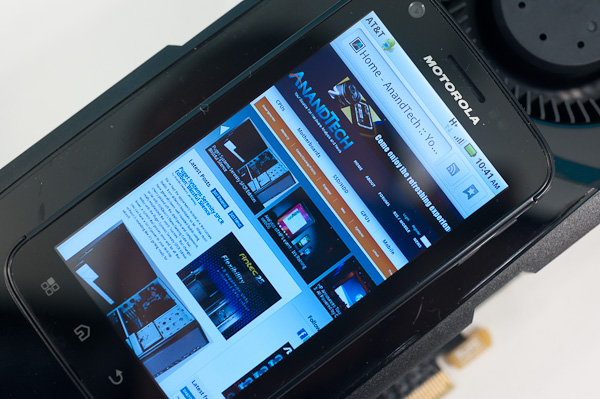
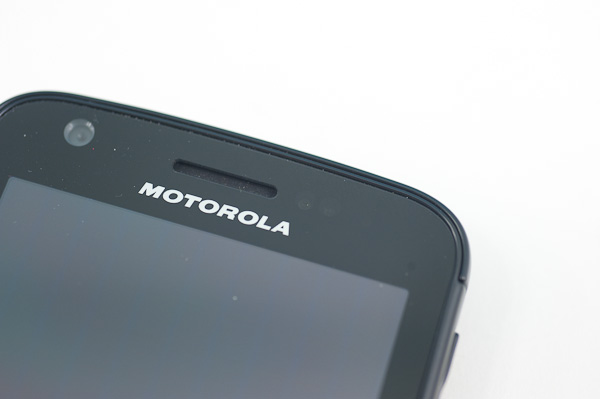
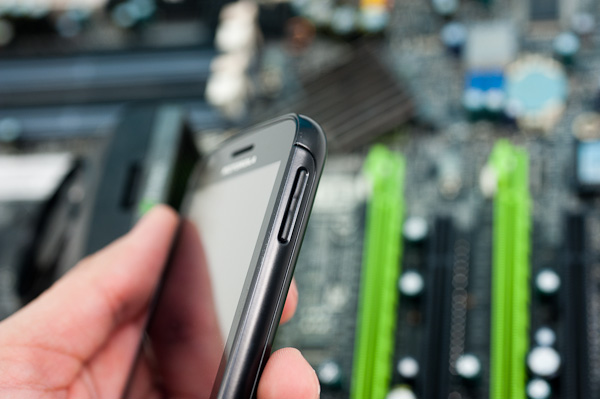
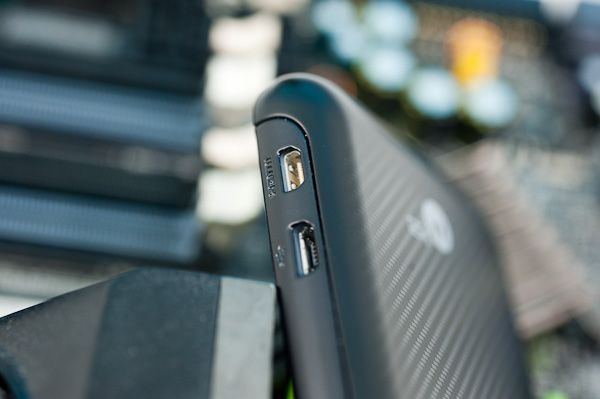
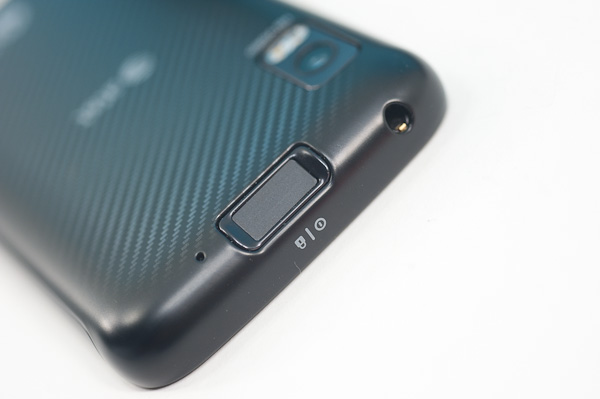

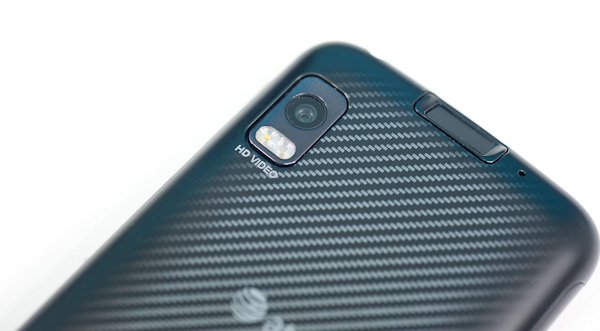
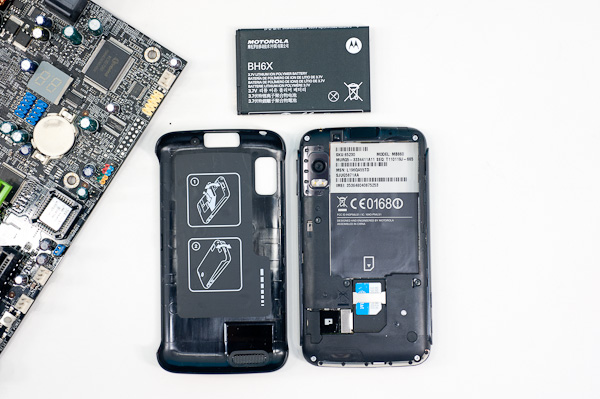








41 Comments
View All Comments
Shadowmaster625 - Monday, February 14, 2011 - link
I was confused when I saw that price. Why would anyone pay that? Then it got me wondering... are we not able to simply plug the phone into our own monitor using the appropriate hdmi cable? And then plug in a usb keyboard and mouse? Who needs a even a $190 dock? This article didnt really explain why. I've got 3 usb keyboards and just as many mice laying around. The last thing I want to do is buy another to satisfy their need for revenue.bill4 - Sunday, February 13, 2011 - link
The whole controversy over pentile matrix just scream of something Apple fanboys kicked up to attack the competition. Here's guessing both of the editors you mentioned carry an iPhone everyday. Was I right? Gee, what a shock. They probably also love the "retina display" even though that was the biggest bunch of marketing hooey ever. For multiple reasons, not least of which scientifically the resolution has to be a good deal higher than 960X640 for the human eye to not be able to make out pixels at the distance the iPhone is actually used.The Apple bias is the media is just insane. Almost every single tech editor in the world just happens to have an iPhone as his personal phone, even though it's the worst phone on the market.
Anyways my point is, NOBODY in the real world cares about this. I have a Captivate, and I NEVER would have suspected any problem with the display if I hadn't read about it, in fact I still didn't know what the problem supposedly was after reading about it!
I'm afraid I dont know if I can go back from Super Amoled, the off angle viewing is just so good, when I look at my friends Droid X or iPhone, they just look so washed out and terrible. Even though I'm not exactly thrilled with some aspects of Samsung, and was considering picking up an Atrix or Inspire, the sad fact is I seriously am beginning to wonder if I'll ever be able to go back to a regular LCD on a phone now, they just look so bad.
bill4 - Sunday, February 13, 2011 - link
ok, maybe not the biggest bunch of marketing hooey ever, but you get the idea.RaLX - Sunday, February 13, 2011 - link
Well I would say you're the one behaving as a fanboy...Fer me the iPhone display (even if the name is marketing) has a superior definition for text and images and thanks to it being IPS technology the colors are more natural and viewing angles are very good for a LCD (even though poorer than AMOLED of course).
I hated Nexus One fuzzy text and everybody it's entitle to their opinions without having to be called names. I can tell you that there are persons like me that doesn't stand the grilled texture vision of this kind of LCD and even though I could live with that I will avoid it whenever I can.
jaredtrobinson - Sunday, February 13, 2011 - link
lol I agree w/ you.. so much rage from that guy :)Anand stated clearly it was a matter of preference. I have an OG Droid and friend has a Dinc, girlfriend has a DroidX. I am not a fan on the Dinc when reading text. The TFTs to me just seem much more crisp
JCheng - Sunday, February 13, 2011 - link
I personally care about this a lot. I went to the AT&T store to buy a Captivate and was very distracted by the display's flyscreen effect--that was before I ever heard of pentile (which I learned about after getting home and googling what was wrong with these screens).To me the effect is NOT subtle and is very annoying, it's a dealbreaker for me. I thought my next phone was going to be the Atrix but looks like it will be Inspire or Galaxy S II instead.
TareX - Tuesday, February 15, 2011 - link
Ditto. I was almost sure the Atrix was gonna be my next phone. I mean, LCD PenTile???? Bad call.I love SAMOLED PLUS, but I hate Samsung's TouchWiz.
TheMan876 - Sunday, February 13, 2011 - link
I'm currently an OG Droid user and I was thinking of getting a Droid BIONIC (almost the same as an Atrix) when it comes out. But this Pentile screen may make me reconsider.I was really happy to read that there would be a higher res screen on these phones, but I hate that Pentile matrix whenever I see it on my friend's Galaxy S phone. Bugs the crap out of me and I'm by no means an Apple fanboy.
bill4 - Sunday, February 13, 2011 - link
/AntoineDodsonvoiceHow can tech editors actually cover this product and not instantly realize how stupid it is?
Hmm, well I can hook it to my phone and it's like a real netbook!
Hey guess what, Wal Mart sells 10.1", Win 7 starter, 160 GB HDD, netbooks for 249 all day every day.
This laptop dock thingy, that isn't 1/4 as good or powerful as a real netbook,adds $300 to the price...plus I'm not sure but I thought I read somewhere the dock thing is $130 on top of that...but even if it's "only" 300, it makes no sense AT ALL. It's not even more portable.
The only way this possibly makes sense, is if by using the phone hardware, you save money on the laptop dock thing, aka it was available for say, 99 dollars. Even then it's pretty dicey, as almost everybody probably already has a laptop, and a good portion already own a netbook as well.
Plus, though it's technically illegal it works fine, with a tether program like PDA net, you can tether (even on an unrooted phone) without paying the extra 20, which you cant do with this dock AFAIK (since, it doesnt run windows to run the PDA client).
strikeback03 - Monday, February 14, 2011 - link
Because the idea isn't really really dumb, the price is. Would you rather they ignore it until the inevitable price cuts are announced?